Jean and Cecile Miguet
Jean Francois and Cecile Miguet arrived in Australia from France in 1951, sailing from Genoa near the France/Italian border.
Jean was a welder for Citra Fougerolle, a French company contracted to build the Trevallyn power station and dam for the Hydro Electric Commission. He worked in the Trevallyn tunnel, welding together sections that formed the water pipeline from the Trevallyn dam to the power station on the Tamar.
However, Jean, the son of a fifth generation winemaker from the famous grape growing regions in SE France brought with him the family’s traditional love of wine and winemaking. He also brought with him a dream of establishing a vineyard with his wife and producing the best Tasmanian wines.
Following an extensive search of Tasmania for a suitable piece of land to grow wine grapes, the Miguets settled on the land known now as Providence Vineyards.
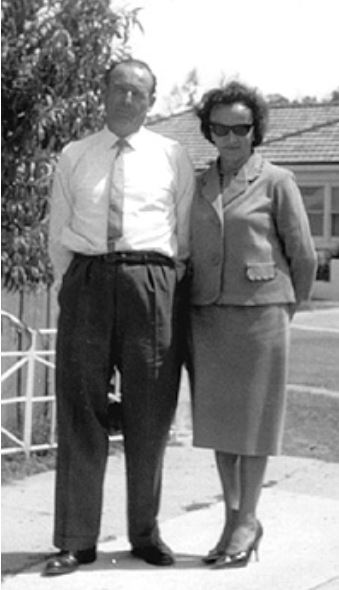
Madame Miguet recollects with a chuckle their original investigation of the property. Whilst she was looking over the house Jean (Johnny) was moving around the property with his soil thermometer. He arrived at the house elated and announced that they would take the property.
Madame Miguet cried: “But Johnny, you haven’t seen the house yet!” Jean Miguet was so pleased with the potential of the property he did not need to see the house that was to be his home for the next twenty years.
The initial plantings came from material that was illegally brought to Australia from France. This material consisted of Pinot Noir and Chardonnay and ‘trial varieties’ of Chasselas and Grenache. This collective of vine imports has affectionately become known as the ‘gumboot clones’ as they were imported inside immigrating vignerons ‘gumboots’.
The original plantings and steel trellis posts survive today and the steel not rusting due to the high pH or Alkaline soils. The original plantings are located on the eastern side of the property in three north-south rows next to the eastern boundary and neighbouring gravel track. This ‘mother block’ appears to have a number of selections (perhaps even clones) of Chardonnay, Riesling and Pinot Noir. As the residing vigneron I have initiated a program to map the genomes of variants within each of these varieties. These mother block vines clearly display different growing and grape bunch characteristics and so confirming their genetic sequence seems a natural progression to capturing another element of the contribution made to the Australian wine industry by two humble and passionate french immigrants with a dream.
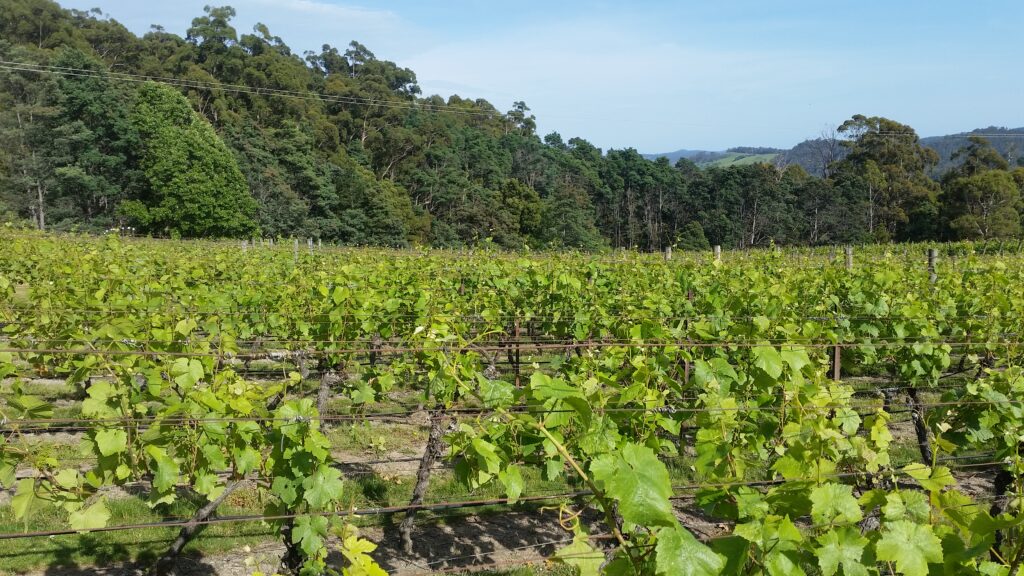
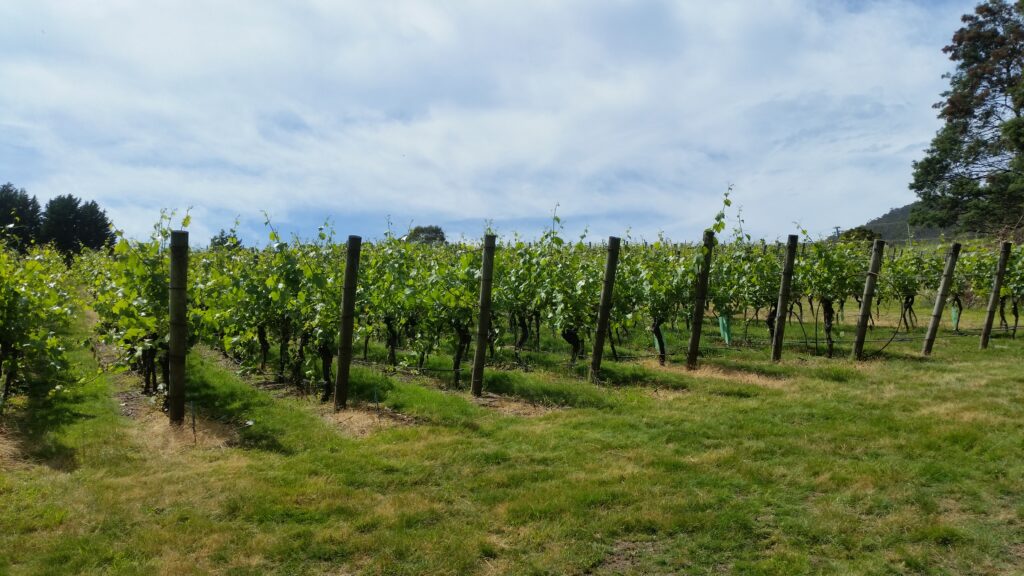
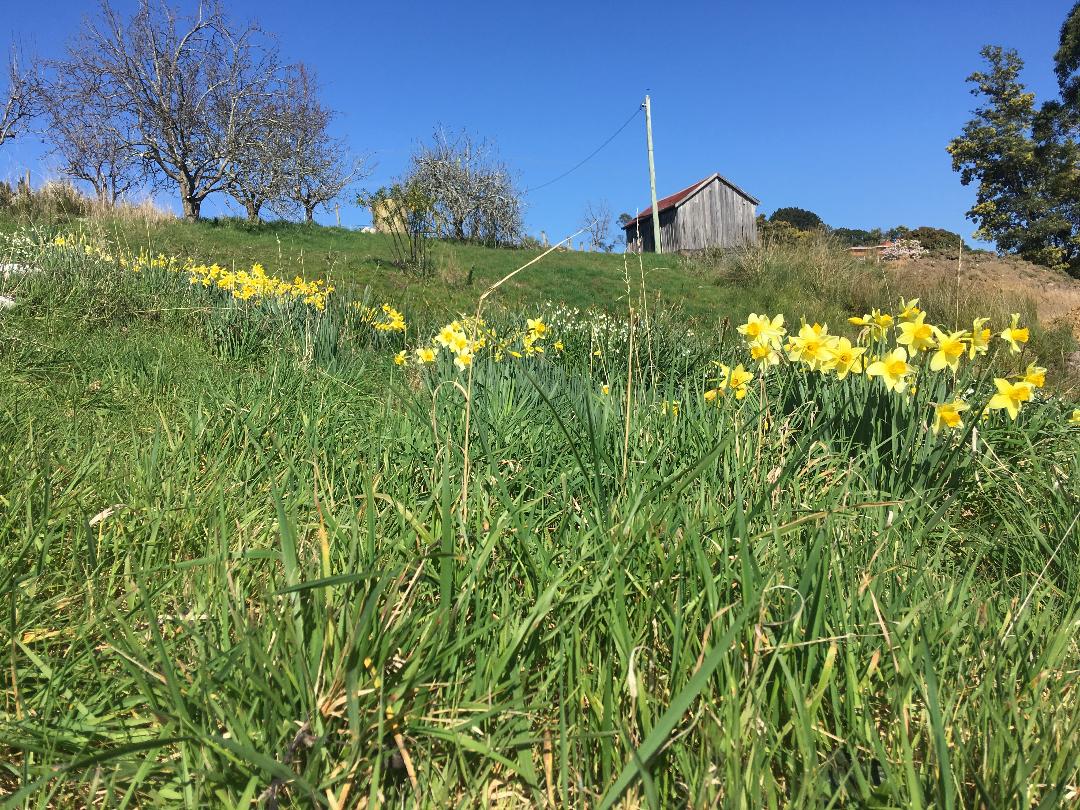
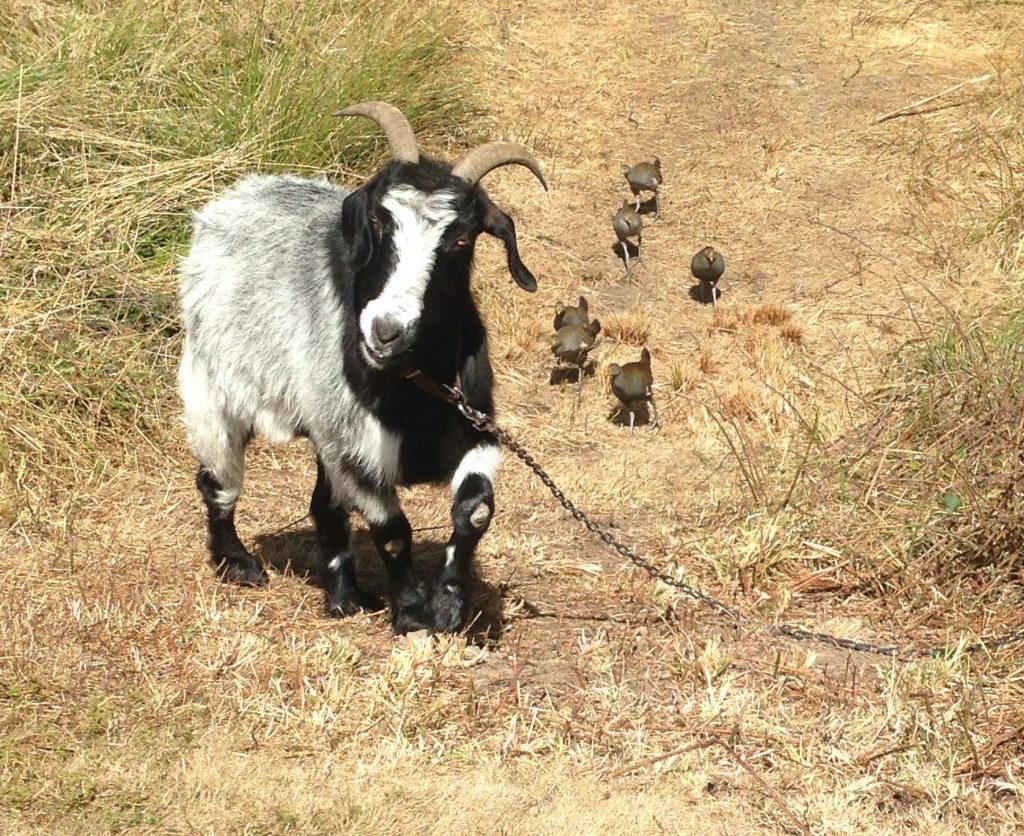
These same plantings were also near the house that Cecile made their home. Sadly the house and with it some of their history burnt down in July 1979. However the concrete path that lead from the house to the winery remains and is still lined with pear trees Madame Miguet planted. Cecile was a keen gardener and she also planted many daffodils and other bulb near the house. The daffodils have also prospered and today provide a vivid cream and yellow display in the early spring. The Block of Chardonnay planted beside this area of daffodils has been named the Madame Miguet Chardonnay due to her un-tiring efforts to tender the vines and maintain the oak the wines were aged in.
Once it became known that the Miguets were planting grapes for the production of alcohol there was some concern expressed by local sectarian groups and by individuals who resented change.
Their initial attempts were frustrated by a number of cruel events. Windbreak trees and vines were sprayed with herbicides and the family goat poisoned. A number of letters in the newspaper reflected local concern regarding the production of alcohol. The Miguets remained stoic and committed to their dream despite also being labelled as ‘the w*gs on the hill’.
Notwithstanding all these setbacks the vineyard grew and Jean built a small winery, installing a basket press and wax-lined concrete tanks.
He made wine and they tended their small vineyard carefully, each winter removing the old bark by hand off each vine to deter insect pests. Their viticulture and winemaking was fastidious with individual attention for each vine and their equipment well maintained.
To clean their oak barrels Madame Miguet, a petite woman, would pour boiling water and a piece of chain inside and then roll the barrels up and down the concrete path that led to their house.

As their small vineyard grew Jean then attempted to obtain a liquor license in order to be able to sell his wine. This led to further frustration, frustration which would not be resolved in his lifetime.
The Tasmanian state government had no formal vehicle that would allow a grape grower to make and sell his product. The only avenue open to Jean Miguet was to make the wine and sell it to a licensed wholesaler who would then on-sell his product. This is not what Jean Miguet had envisaged.
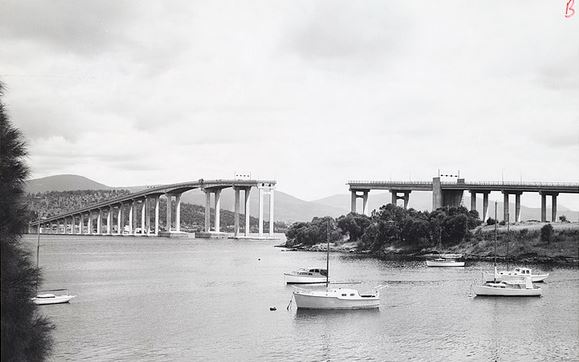
His many attempts to get the government to change its legislation took the Miguets to Hobart. On one such visit, following yet another round of futile engagements with state politicians and bureaucrats, the Miguets were crossing the Tasman Bridge heading to their accommodation in the eastern suburbs.
They remarked on a loud crash, which turned out to be the freighter Lake Illawarra carrying away two spans of the Tasman Bridge behind them. They did not become aware of their narrow escape until the next day.
In 1975 Jean Miguet was tragically diagnosed with leukaemia. They leased their vineyard to a consortium of three interested parties and returned to France where Jean died in 1976, he is believed to be buried in one of the 4 main cemetery near Lac Annecy (Annecy) in Eastern France near the Italian border. Due to Covid restrictions and once international travels are feasible I plan to continue the search for his tombstone.
Madame Miguet returned to Tasmania after her husband’s death and lived at Bridport. There were quite a number of people involved from time to time in partnership with Madame Miguet to produce wine. These included Graham von Bibra, Leigh Meyers, Bob Dornauf, Brian and Sandra Nicholls, Gavin Scott and Max Reynolds.
